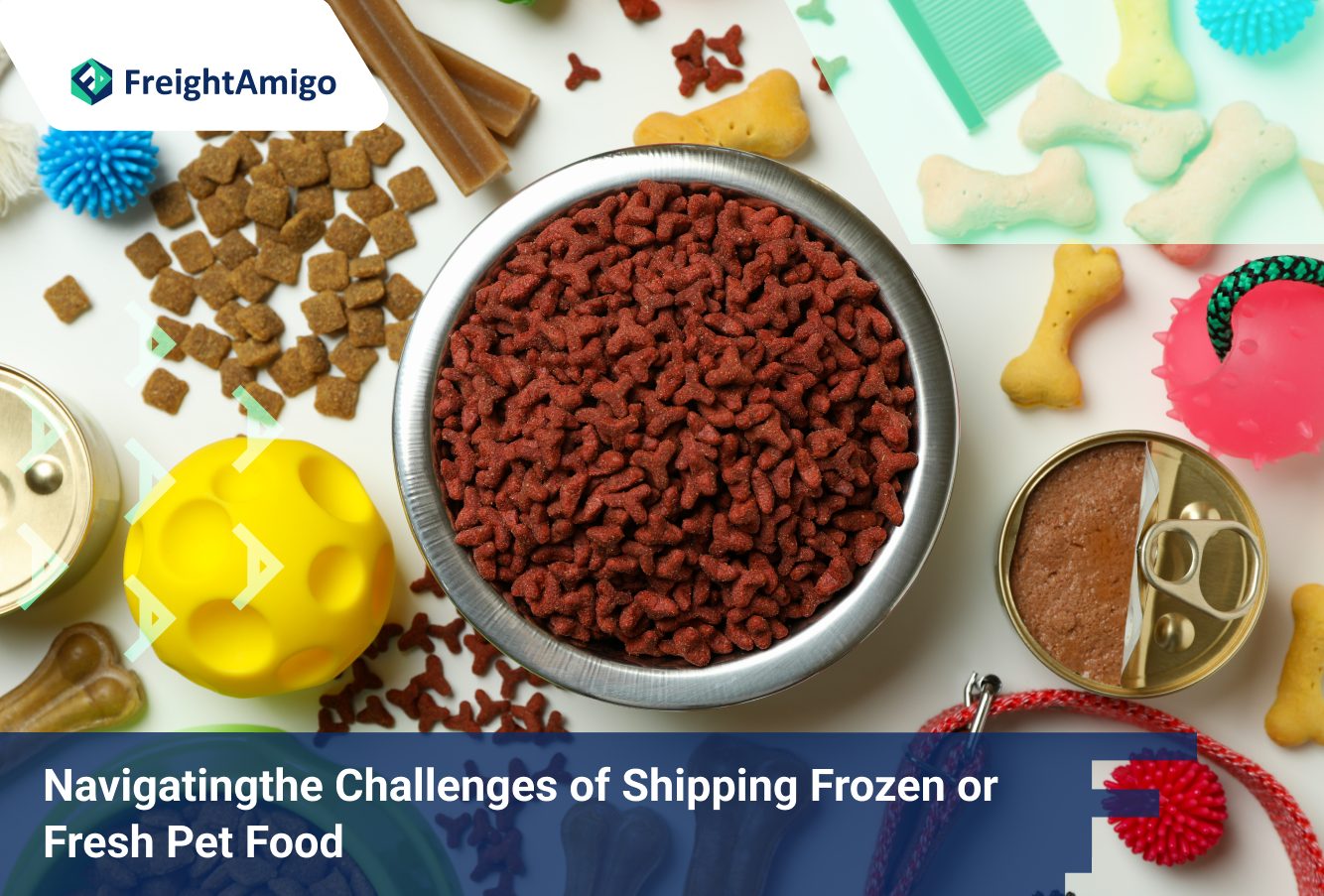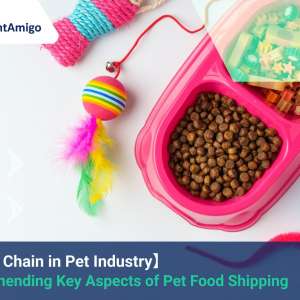Shipping pet food may seem like a simple task, but there are numerous challenges when it comes to transporting frozen or fresh pet food. Whether it’s regulatory requirements, packaging considerations or temperature control, pet food companies face a number of obstacles that must be overcome to ensure the safe and timely delivery of their products.
One of the main challenges of shipping pet food is the need to comply with regulatory requirements. Different jurisdictions have different rules and regulations when it comes to importing and exporting pet food. These regulations can include specific labelling requirements, health and safety standards and documentation. Pet food companies need to keep abreast of these regulations and ensure that their products meet all the necessary criteria to avoid delays or complications during shipping.
Latest update on 15 February 2024 by Aiden Ng– Marketing Analyst at FreightAmigo
Want to compare the best Express, Air Freight, Sea Freight, Rail Freight & Trucking rates so as to have better control on cost?
Regulatory requirements for shipping pet food
Regulatory requirements play a crucial role in the shipping of pet food. For example, in the United States, the Food and Drug Administration (FDA) regulates pet food imports to ensure the safety and quality of the products. Pet food companies must comply with the FDA’s regulations, which include proper labeling, ingredient lists, and adherence to certain manufacturing standards. Additionally, international shipping may require compliance with the regulations of the destination country, such as import permits or documentation for certain ingredients.
To navigate these regulatory requirements successfully, pet food companies must establish robust quality control processes. This includes rigorous testing of their products to ensure they meet all the necessary standards and regulations. By doing so, they can minimize the risk of non-compliance and ensure a smooth shipping process.
Packaging considerations for shipping frozen or fresh pet food
Packaging plays a critical role in the shipping of frozen or fresh pet food. The packaging must not only protect the product during transit but also maintain its freshness and quality. For frozen pet food, packaging must be able to withstand extreme temperatures and prevent any leakage or spoilage. This often involves using specialized materials, such as insulated containers or dry ice, to maintain the required temperature throughout the shipping process.
In the case of fresh pet food, packaging must be designed to preserve the product’s shelf life and prevent contamination. This may involve the use of vacuum-sealed bags or modified atmosphere packaging to extend the freshness of the food. Additionally, proper labeling on the packaging is essential to provide clear instructions for handling and storage, ensuring that the product reaches its destination in optimal condition.
Temperature control and logistics for shipping pet food
Temperature control is crucial when shipping frozen or fresh pet food. Any fluctuation in temperature can compromise the quality and safety of the product. Pet food companies must carefully plan their logistics to ensure that the products are stored and transported at the required temperature throughout the entire shipping process.
This often involves utilizing specialized refrigerated trucks or containers that can maintain the desired temperature. Monitoring systems are also employed to track and record temperature data during transit, providing an extra layer of security and ensuring that any deviations can be promptly addressed.
Managing the logistics of temperature-controlled shipping requires careful coordination between the pet food company, shipping carriers, and logistics providers. It is essential to establish effective communication channels and clear protocols to address any potential issues that may arise during transportation.
Common challenges faced when shipping pet food
Despite careful planning and preparation, there are several common challenges that pet food companies may encounter when shipping their products. One of the most significant challenges is dealing with unexpected delays or disruptions in the supply chain. This can include issues such as customs clearance delays, transportation breakdowns, or adverse weather conditions. Such disruptions can result in product spoilage or compromised quality, leading to dissatisfied customers and financial losses.
Another challenge lies in ensuring that the products reach their destination on time. Timely delivery is crucial for maintaining the freshness and quality of frozen or fresh pet food. Delays in shipping can lead to product deterioration and may even render the product unsellable. Pet food companies must work closely with their shipping partners to establish efficient transportation routes and contingency plans to address any unforeseen circumstances.
Choosing the right shipping partner
Selecting the right shipping partner is vital for the successful shipping of pet food. The shipping partner should have experience and expertise in handling temperature-controlled shipments and be familiar with the regulatory requirements of the industry. They should have a proven track record of reliable and timely deliveries, as well as robust quality control processes to ensure the safety and integrity of the products.
Furthermore, effective communication and collaboration between the pet food company and the shipping partner are crucial. This includes clear lines of communication, regular updates on shipment status, and a strong commitment to resolving any issues that may arise during transit.
Navigating the challenges of shipping pet food
Shipping frozen or fresh pet food comes with its fair share of challenges. Regulations, packaging considerations and temperature control logistics present obstacles for pet food shipping. Choosing the right shipping partner can overcome these challenges and ensure a smooth sailing shipping experience. At FreightAmigo, we leverage cold chain expertise and global infrastructure to overcome these challenges. Through proactive compliance, validated shipping methods and 24/7 visibility, we ensure your products maintain integrity to pet bowls worldwide. Partnership with us allows pet brands to focus on production while we deliver seamless fresh and frozen transportation.
There are different options for cargo transportation. If you want to choose the most convenient and suitable solution, it is best to have the full support of logistics experts! If you are planning to ship pet food, contact us to discuss customized pet food transportation solutions.
Read More:
【Pets and Logistics】Unraveling the Global Challenges in Pet Food Supply Chain Management
【Perfect Food Shipping Company】Choosing the Right Partner for Your Delicious Products
【Supply Chain in Pet Industry】 Comprehending Key Aspects of Pet Food Shipping
How to Ship Pet Supplements: A Comprehensive Logistics Overview
If you have any inquiries on logistics/supply chain, feel free to contact FreightAmigo now:
Chat with us online | Hotline: +852 28121686 | WhatsApp: +852 27467829



